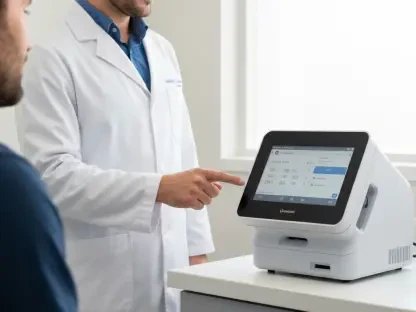Despite advances in medical technology, early diagnosis of breast cancer remains a formidable challenge, with significant implications for patient outcomes and healthcare systems. Researchers have continually searched for innovative solutions to enhance predictive accuracy and diagnostic efficiency. In this realm, the integration of artificial intelligence (AI) into mammography screening emerges as a groundbreaking approach. This work highlights how AI technologies can revolutionize the early detection of breast cancer risks, potentially altering existing screening paradigms by identifying high-risk individuals much earlier than traditional techniques.
The Promise of AI in Breast Cancer Screening
Breast cancer stands as a leading cause of mortality among women worldwide. The staggering statistics underscore the urgent need for improved detection methods. In 2022 alone, breast cancer accounted for nearly a quarter of all female cancers, with over 670,000 deaths reported globally. Despite its ubiquity, traditional mammography methods have struggled with accuracy and reliability due to human error and the inability to detect malignancies between regular screenings. These limitations necessitate a paradigm shift in how mammography is approached.
AI in mammography screening strives to address these inadequacies by utilizing sophisticated algorithms to analyze mammogram images, identifying subtle changes and patterns that might go unnoticed by the human eye. The research presented addresses significant questions surrounding how AI tools can be used to predict future breast cancer risks. By offering more personalized, proactive screening practices, AI not only promises to enhance clinical outcomes but also sheds light on a new era of healthcare precision, where risk assessments can advance well before visible detection.
Detailed Methodology and Insights
Methodology
The research utilizes a retrospective cohort analysis to assess the capabilities of a specific AI tool designed to evaluate breast cancer risk via mammogram analysis. This study examines a sample of around 116,495 women, contributing roughly 350,000 screening examinations sourced from the Cancer Registry of Norway’s BreastScreen Norway program. Stringent adherence to the STROBE guidelines ensures the rigor and reliability of the study framework.
Findings
The findings demonstrate the AI tool’s remarkable predictive capability, identifying individuals at higher risk of developing breast cancer up to six years in advance. Notably, those with higher AI-derived breast scores were more likely to develop cancer in subsequent years than those with lower scores. During the analysis, affected individuals exhibited increasing AI scores as they approached diagnosis, showcasing a progression not seen in counterparts who remained cancer-free, translating AI’s efficacy into solid predictive evidence.
Implications
The incorporation of AI into breast cancer screening holds significant implications. This technology presents avenues for more nuanced and targeted screening strategies, thus optimizing resources and enhancing patient care. By allowing for earlier identification of high-risk individuals, the healthcare community can anticipate better management and treatment plans, potentially improving survival rates and reducing the socio-economic burdens associated with late-stage cancer diagnosis.
Reflection and Prospective Developments
Reflection
Challenges encountered during this research primarily involve the study’s population homogeneity, as it predominantly includes white women, potentially limiting the generalizability of its findings. The study emphasizes the need for AI tools to be validated across diverse demographics, considering evolving cancer detection standards. Despite these challenges, the study robustly demonstrates AI’s promising role, while also acknowledging the need for continuous validation in varying clinical contexts.
Future Directions
As AI’s potential becomes clearer, further research should focus on refining these tools to cater to a broader, more diverse population, ensuring equitable benefits across all demographics. Future studies must engage in large-scale prospective trials to further attest to AI’s diagnostic accuracy and feasibility within real-world clinical settings, and explore the integration of AI risk assessments with existing radiologic protocols for a seamless transition into medical practice.
Insightful Conclusion
The study played a pivotal role in demonstrating AI’s capacity to potentially revolutionize early breast cancer risk assessment. It shed light on AI’s transformative influence in making screening more inclusive and personalized while pushing the boundaries of technology-assisted healthcare. Future integration of AI in mammography holds promise for not only improving patient outcomes but also fostering advancements in personalized medicine. Moving forward, the unequivocal evidence for AI’s utility in this respect merits continued exploration and validation, heralding a new dimension of precision healthcare that can improve global health outcomes significantly.









